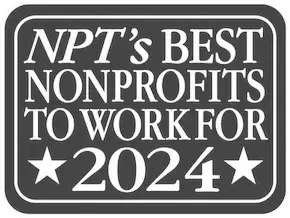Leaving Communities Behind: Examining Financial Vulnerability for Black Families
By Olivia Rebanal, Director, Inclusive Food Systems
Despite positive headlines about the American economy, financial vulnerability is a reality for many people. This was brought into sharp focus during the government shutdown Communities rallied around their members and organizations provided support, but it became clear that many individuals and families, even those with stable, full-time employment, found themselves one crisis away from financial instability.
Whether due to stagnant wages, housing unaffordability, or wealth stripping from the Great Recession, individuals and families are struggling to keep up with the American Dream. Black Americans in particular have experienced the deepest instances of economic hardship, losing the most in terms of home ownership, access to credit and non-predatory financial services, and saving toward long-term wealth building.
This is a measurable fact.
Each year, Prosperity Now puts together a scorecard that illustrates the nation’s economic outlook, using a broad set of indicators of economic health that include job quality, savings, credit, education, and health. In examining Prosperity Now’s 2019 Scorecard, a picture develops of the true financial conditions experienced by Black Americans develops. Importantly, the scorecard determined that, because of structural racism, race plays a strong role in economic inequity.
As Black History Month comes to a close and we look forward to supporting our communities throughout the rest of the year, understanding these inequities – from savings to credit to home ownership – is crucial for us at Capital Impact Partners and other mission-driven organizations to work with community members to address structural racism and expand economic opportunity nationwide.
Lacking A Savings Safety Net

Savings provide a financial anchor, but many Black Americans are unbanked or underbanked, making it more difficult to save.
Savings are often the first line of defense during a financial crisis, however, many Americans are lacking that safety net, particularly people of color. The numbers are stark: the scorecard found that as many as 40 percent of households do not have enough savings to weather a financial disturbance. A study found that many people have less than $1,000 in their savings account. These households are “liquid asset poor;” they do not have cash or easily converted assets to replace income at the poverty level for three months.
Fewer than 50 percent of Black households (45.7 percent) saved for an emergency, compared to 62.4 percent of White households.
Wealth disparities make the situation bleaker: Black households earn approximately 61 cents for every dollar earned by White households, and Black households own only six cents for every dollar of White wealth. The discrepancy in wages makes it even more difficult for Black families to accumulate wealth, as covering bills and expenses leave slim margins for savings. Wages discrepancies also make it harder to rise out financial shocks.
Falling Behind in Bill Payments
The 2019 Scorecard includes a new measure to determine how well households are managing financially: the percentage of households that fell behind on bills in the past 12 months. Nearly 25 percent of Black households fell behind on their bills, compared to slightly more than 10 percent of White households and 6.5 percent of Asian households.
Digging a Deeper Hole through Credit

Credit is a financial tool, but it can make or break a families economic future, depending on a families’ ability to repay debt.
Credit can enable families to build wealth by investing in home ownership or higher education. However, credit can leave families with few resources deeper in debt as they try to make ends meet. Nearly 50 percent of credit scores are below prime, meaning that they can be subject to higher interest rates and fees. On top of that, nearly 20 percent of households did not have mainstream credit in the past 12 months. This group includes 35.9 percent of Black households, compared to 14.3 percent of White households.
Diminishing Wealth due to Unemployment
Unemployment has hampered Black communities for generations, especially when factoring the aftereffects of mass incarceration. According to the 2019 Scorecard, people of color experience unemployment and income poverty at significantly higher rates than White workers. Annually, White workers experience 3.5 percent unemployment, compared to 7.1 percent for Black workers. Income poverty is significantly higher for households of color (20.4 percent) than for White households (9.9 percent), and has widened over the last year.
Losing Ground without Homeownership
Homeownership not only provides stability; it is also a key asset for wealth building.
Black home ownership is at a considerably lower rate than for White households, the result of decades of real estate and financial services discrimination that has made it more difficult for them to become homeowners in the first place. Forty-two percent of Black households own a home, compared to 71.9 percent for White households. Additionally, unaffordability impacts both home ownership and rent. Nearly 55 percent of renters of color are housing cost-burdened, meaning that more than 30 percent of their monthly incomes is spent on rent and utilities. This leaves exponentially less for these families to use to cover other expenses or save for a down payment.
Changing the Status Quo to Expand Prosperity
Statistics like these take away people’s dignity and fly in the face of the work being done nationwide by Capital Impact and mission-driven organizations to amplify equity for all. Financial vulnerability causes a ripple effect: when families have less income, they have to decide between paying rent and covering health care costs, between paying down debt and setting aside funds for a child’s education. Healthy food, education, quality health care, affordable housing, dignified aging, financial stability: each of these is connected to the others. As an organization that works with communities to break barriers to success, we have to be concerned with these issues and address them as part of a continuum.

To fulfill our mission, Capital Impact continues to work with communities to access critical social services and achieve economic opportunity.
To change this trend for Black Americans and all communities of color, strong policies are needed that support families experiencing economic hardship to create paths to wealth building. Within the scorecard, Prosperity Now offers several policy recommendations, including social safety net programs like Medicare, Medicaid, and the Supplemental Nutrition Assistance Program (SNAP); savings plans for emergency costs and long-term wealth building opportunities; and fair lending standards and improved credit reporting and scoring. At the least, these policies would help individuals and families overcome financial shocks; at most, they could create equitable opportunities for wealth building and economic prosperity.
Right now, too many families are struggling to make ends meet, with little chance of achieving the American Dream. Now that we have a full picture of the depth of the problem, we must work to find strategic solutions that provide transformational change to address and rectify very real economic hardship.
Capital Impact invests in our communities to expand opportunity nationwide. Learn about how to invest in shared prosperity for communities nationwide through our Capital Impact Investment Notes.







